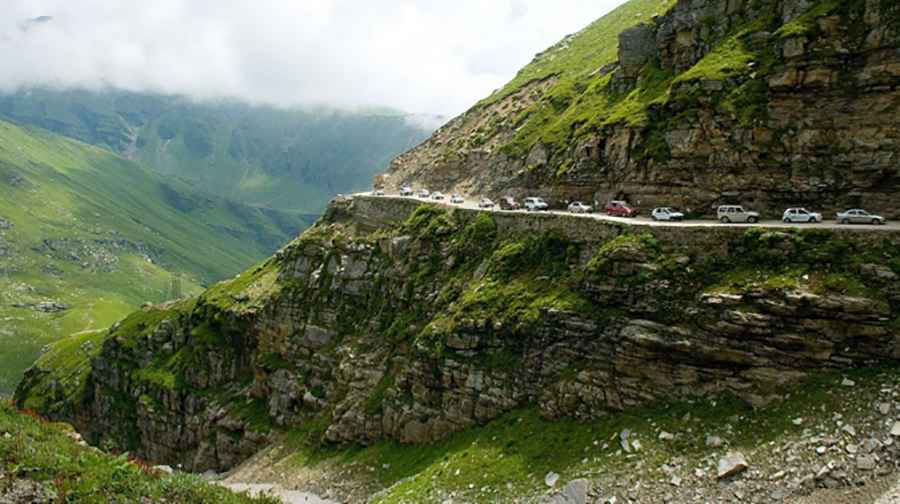Traveling on dangerous mountain roads: Why insurance with helicopter evacuation is necessary
In many parts of the world, mountain roads come with more significant dangers than city and highway roads. For whatever reason you decide to drive a mountain route, you should always ensure you’re ready for unforeseen circumstances.

Preparations like fueling your car and including trekking travel insurance with helicopter rescue accommodations to your travel insurance enable you to remain composed and handle them skillfully.
Continue reading as we help you understand valuable tips to hold on to when you’re travelling on dangerous mountain roads.
1. Prepare for emergencies
Mountains can be unpredictable. You may be stranded for a long time by an unexpected storm or an accident. Traveling on a mountain road can also expose you to various situations, weather conditions, and activities that could make you sick or hurt. One effective way to prepare for this is to have the finest travel insurance.
Emergencies, such as severe injuries or natural disasters, might necessitate evacuation. In this case, medical flights become important. On these flights, helicopters or planes transport patients from one place to another. It’s no surprise that travel insurance policies include this as a covered benefit.
When emergency medical evacuations by helicopter are necessary, especially in remote or dangerous areas, travel insurance with helicopter rescue coverage offers financial security. Comprehensive travel insurance policies frequently contain this coverage, particularly under the emergency medical evacuation benefits section. Helicopter rescue may be required when ground transport is insufficient for serious injury or disease.
2. Ensure your car is functional and fueled
Your car could require extra care before a journey into steep terrain, like mountain roads, particularly during the chilly winter. Make sure the gearbox and brake fluids on the car are full. Verify the functionality of the exhaust, heating, cooling, and wipers on the windscreen, battery, and brake systems. A spare tire should be ready to go, and the tires should also be aired. Your car should be in top shape because of unforeseen circumstances, rough terrain, and inclement weather.
Car Preparation Tips:
- Check and refill brake and transmission fluids.
- Verify the functionality of heating and cooling systems.
- Prepare the spare tire and check tire pressure.
Many individuals are unaware that driving up mountain roads uses more fuel than normal. Combining that with the possibility of limited gas outlets and cell phone coverage in mountain regions makes for a disaster. Running out of petrol could put you in grave danger of being struck by another vehicle because many mountain roads have narrow shoulders and poor vision up ahead.
3. Take frequent pauses
Making sure to take regular rests is crucial advice for driving on hills. This is especially crucial if you are traveling on or approaching a very difficult path. Throughout such sections, you must exercise extreme caution when maneuvering your vehicle. Entire mental energy must be directed towards making the drive safe. Therefore, it is best to avoid driving nonstop for extended periods. After taking a break, you will feel refreshed and prepared for the difficult journey ahead.
Rest Recommendations:
- Take breaks every 1-2 hours.
- Rest at designated rest areas.
4. Keep to your side of the road
While driving, resist the urge to take in the gorgeous surroundings by keeping your eyes on the road and maintaining a consistent distance between the yellow lines. The slightest distraction can result in drifting, which can invade the area of oncoming vehicles and lead to an accident. When more than two or three cars follow you, use the roadside pullouts for scenic pauses and let them pass at the next available pullout. Remember that vehicles moving upward have the right-of-way, and keep an eye out for sudden changes in the landscape, such as hairpin curves and high cliffs.
5. Carry paper maps
Losing phone service and even GPS is usual when traveling on mountain roads. So, plan and become familiar with your route by consulting an atlas. If you use your smartphone to map instructions, you can usually keep them even if you lose service. However, if you close the app by mistake or need to modify the route, you risk losing them. In addition, if you are traveling with a trailer or driving an RV, be sure your route avoids highways with width and length restrictions and hills too high for you to handle safely.
Final Thoughts
While some see driving on mountain roads as an opportunity to have fun, others take it as a chance to travel on roads hidden from most travellers and receiving relatively little traffic.
No matter what the motivation might be, it’s important to have a solid travel insurance plan before venturing out on those dangerous mountain routes. Ensure that your Auras travel insurance renewal is up to date. A void insurance policy can be useless in tough times. You can assure yourself of a safe and thrilling drive up into the mountains by caring for these items.